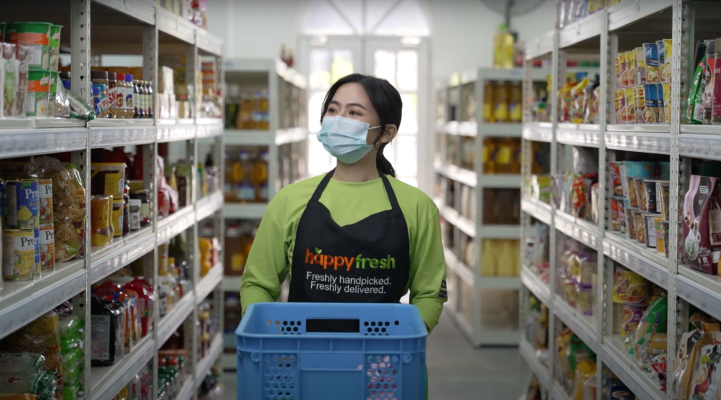One of Southeast Asia’s largest online grocery platforms, HappyFresh, plans to open as many as 100 dark stores across the region to facilitate fresh and dry grocery delivery. HappyFresh currently operates in Indonesia, Thailand and Malaysia, and will focus on growing its business within these markets in the coming year, according to chief executive Guillem Segarra. “Southeast Asia holds a massive opportunity for the online grocery sector,” Segarra told Inside Retail. “We are seeing
re seeing an increase in digitalisation adoption with young and hyper-connected consumers that are used to consuming other services online. Second- and third-tier cities have also experienced larger, exponential growth in the past 18 months – a product of the leapfrog economies that they live in.
“This puts HappyFresh in a position to reach more households, and gives us the ability to better penetrate largely untapped markets.”
The expansion comes after a US$65 million funding round completed last July, which has allowed the business to scale up its infrastructure, strengthen its operations, technology and product offering, and invest in brand awareness and loyalty programs.
Functionality over form
HappyFresh launched 15,000 new SKUs across three temperature zones within its dark stores, which act as a complement to the business’ focus of working together with more than 30 established local supermarkets.
One of the benefits of dark stores is that they don’t need to be built to entertain customers – instead, the focus can be on creating an ideal layout for collection staff.
“As compared to traditional grocery stores, dark stores, which are not accessible to the public, have the capacity to host a large number of products,” Segarra said.
“[We] can therefore focus entirely on personal shoppers, accommodation of multiple temperature zones and selection efficiency.
“We truly see the importance of understanding grocery as a category – informing our ethos of providing a superior shopping experience, and prioritising quality and value for money.”
Online penetration of the grocery sector in Southeast Asia is still relatively low: it sits at about 1 per cent of all orders, compared to 8 per cent in China and 9 per cent in the US.
However, the sector is expected to triple in the next five years, and be worth US$28 billion by 2025, according to a recent report by Grab and Euromonitor International.
“Bricks-and-mortar, and ‘mom-and-pop’, shops are still largely dominating the market as consumers are used to hand picking their groceries on their own,” Segarra said.
“As we propagate into the markets [we] operate in, education will be necessary to help customers better understand our business and operating model.”
As you might expect, HappyFresh has been able to capitalise on the changes brought about by the Covid-19 pandemic, with customers increasingly unable to leave their homes for weekly grocery trips accelerating the uptake of online shopping.
The pandemic also created supply chain issues, which has impacted the ability of many supermarkets to manage their stock levels – especially in the fresh category. Segarra said that HappyFresh works with several local suppliers, which allows the company to ensure the freshness and quality of its produce.

